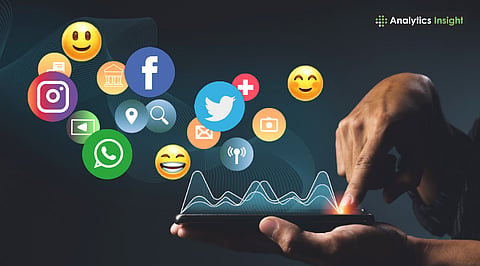

Social media provides real-time, unfiltered user data for analysis.
Tools like Brandwatch and Hootsuite help track trends and conversations.
Hashtags and user engagement can guide business and research strategies.
Social media is not simply a space of scrolling and sharing. It is a live source of information, comments, and trends. It provides all the data scientists with an ocean of insights. Each post, like, and comment is a hint regarding user behaviour, interests, and public mood.
The sheer number of those who use social platforms in the world is huge (more than 4.9 billion people), and the amount of data is enormous. However, it is the interpretation and application of this information that is valuable.
Whether tracking new trends or deciphering customer sentiment, social media for data science insights is rapidly evolving as a vital tool for informed, data-driven decision-making.
Also read: Top 10 Data Scientists to Follow in 2025
So, how can data scientists maximize their potential? Let’s break it down step by step.
The initial step is social listening, which involves monitoring online conversations. This can be done on a specific brand, product, or a subject as broad as climate change.
Platforms such as Brandwatch and Talkwalker will be useful. These platforms read through millions of posts. It categorizes them by keywords, hashtags, tone, and reach.
As an example, a food company can monitor the frequency with which individuals refer to their new snack. It can also be helpful to determine whether the tone is positive or negative.
Hashtags are not merely fads. It encodes information. Even a simple hashtag such as #DataScience or #ElectricVehicles can result in thousands of associated items.
This allows data scientists to study the opinion of the masses. It can monitor the evolution of conversations. Data scientists can also observe what hashtags go viral and why through social media analytics.
In 2023, Instagram reported that the engagement rate of posts with at least one hashtag was 12.6% higher than that of posts without hashtags. This is a good reason to trace the hashtag.
Words carry emotion. Sentiment analysis helps decode that. It indicates whether people are happy, angry, or neutral about a particular thing.
Social listening tools like MonkeyLearn or Lexalytics break down text for tone. This helps data teams understand how people feel about a campaign or a policy.
It’s also useful for crisis management. If there's a sudden rise in negative sentiment, a brand can act fast.
Not all platforms have the same content. Twitter is great for quick reactions. LinkedIn is full of professional insights. TikTok shows emerging youth trends.
By studying each one, data scientists gain a comprehensive understanding of the data. Cross-platform analysis also helps detect fake data science trends or spammy content. It keeps data clean and relevant.
Also read: Top Data Science Startups to Watch in 2025
Social media is more than just background noise; when utilized effectively with the right tools and a clear objective, it can serve as a valuable source of information. It enables us to track trends and predict behavior, creating new opportunities for data science. In a digital-first world, leveraging social media in this way is a strategic approach for the future.
